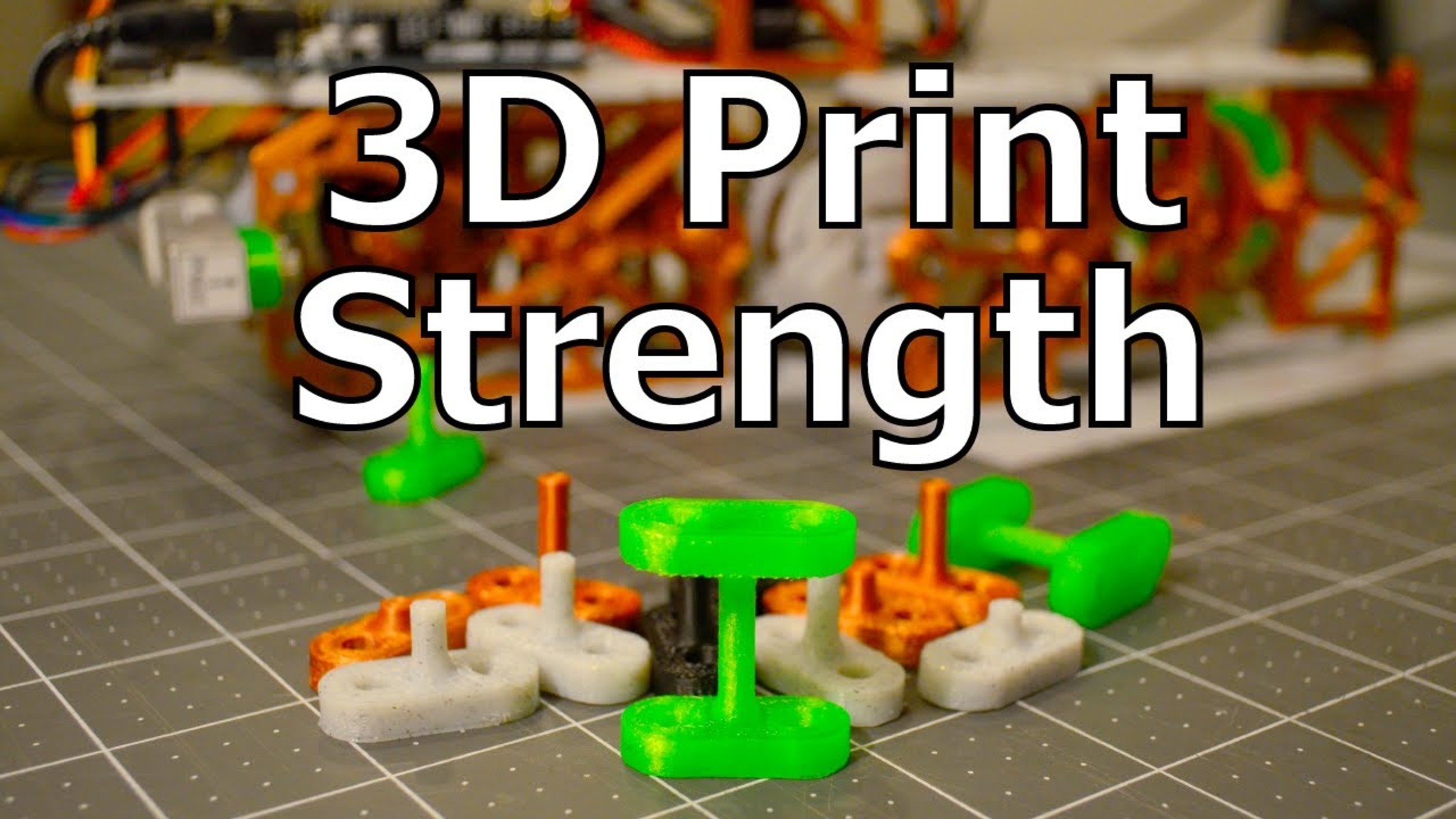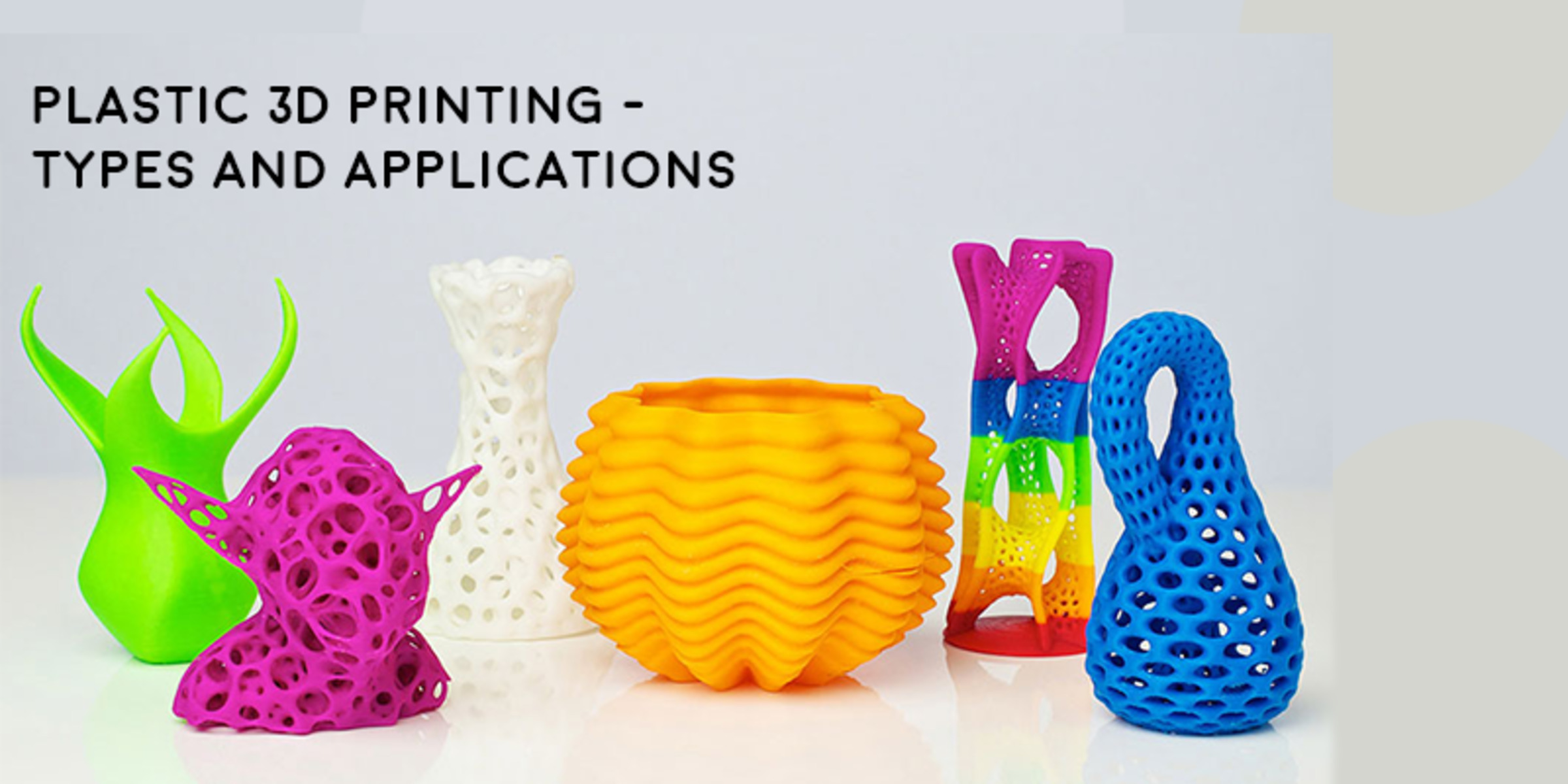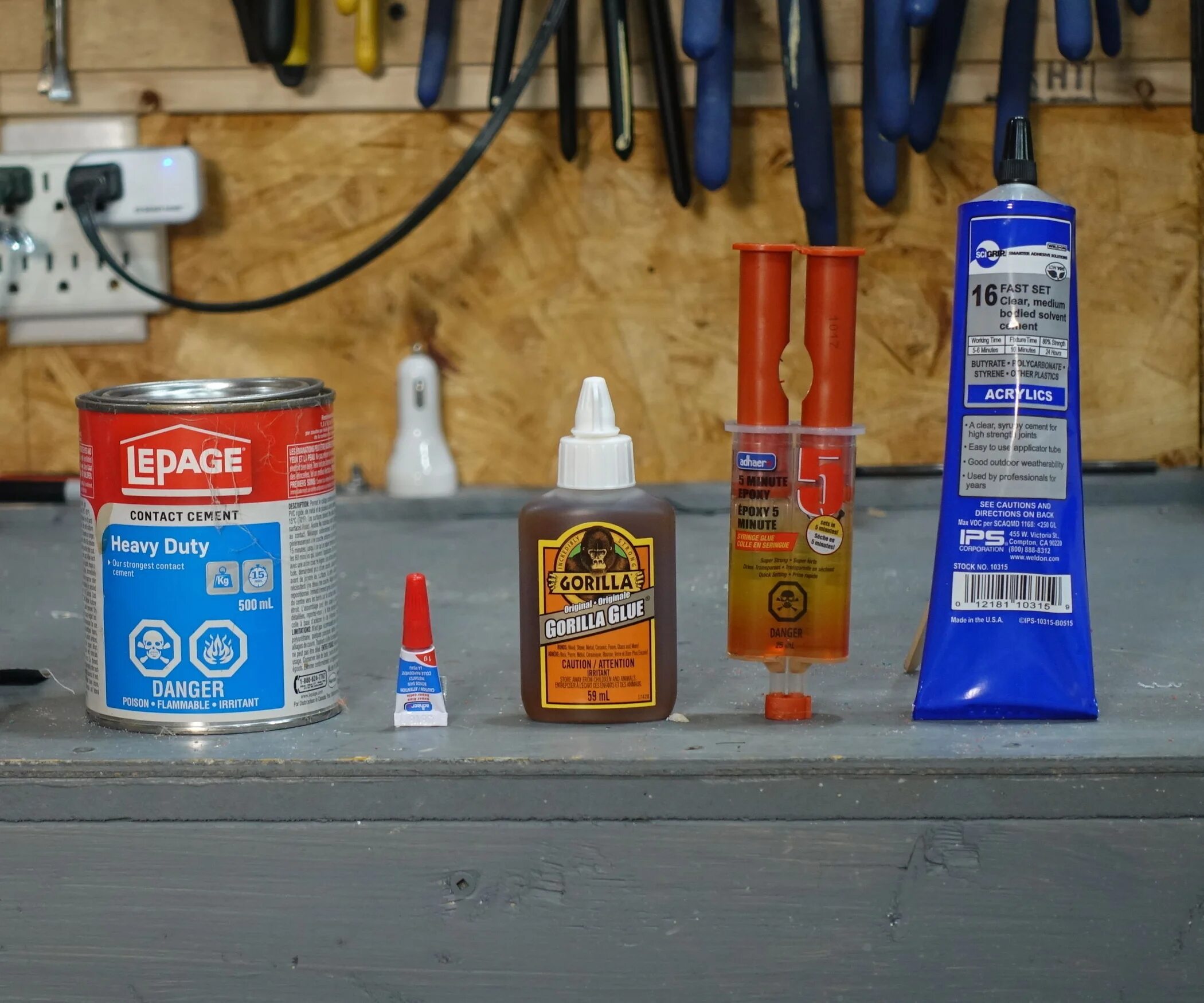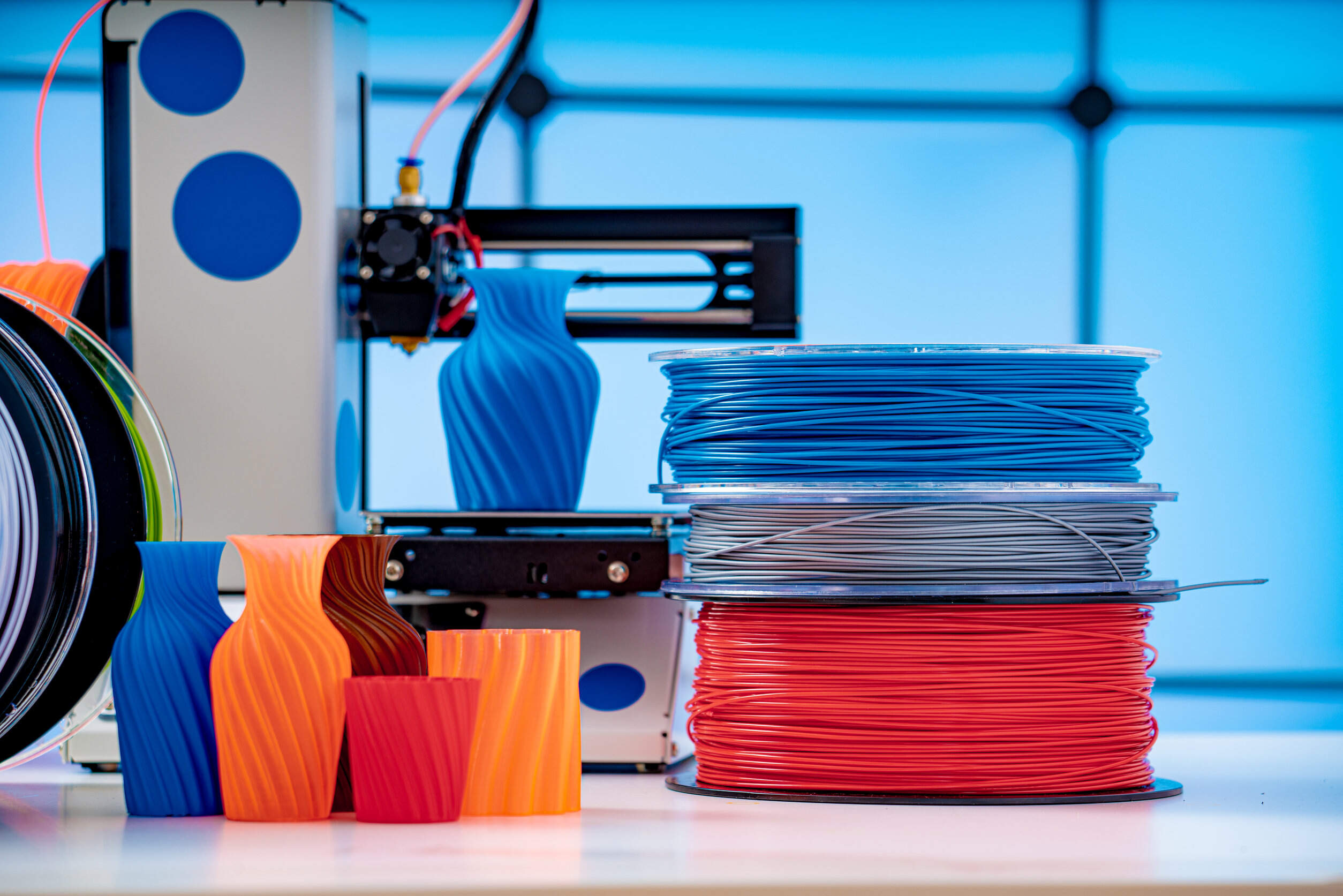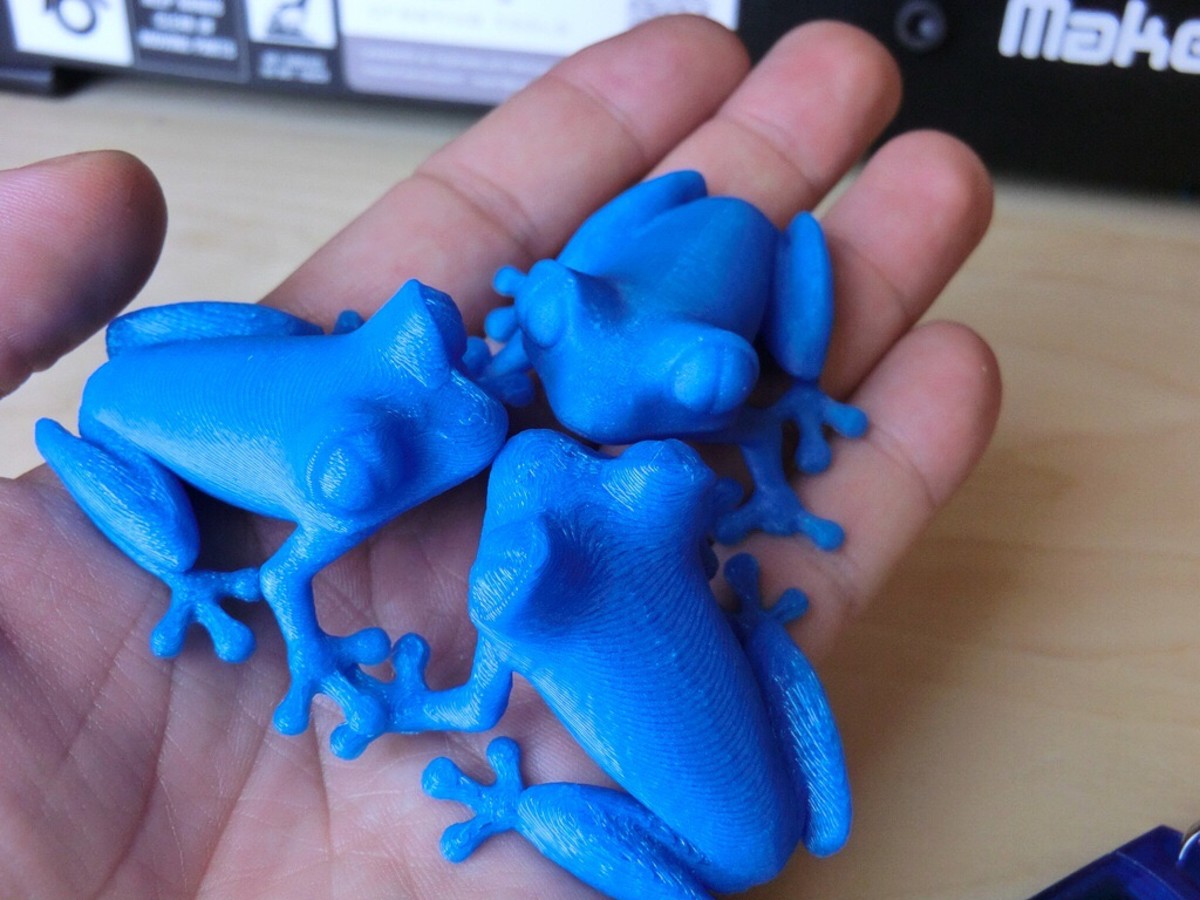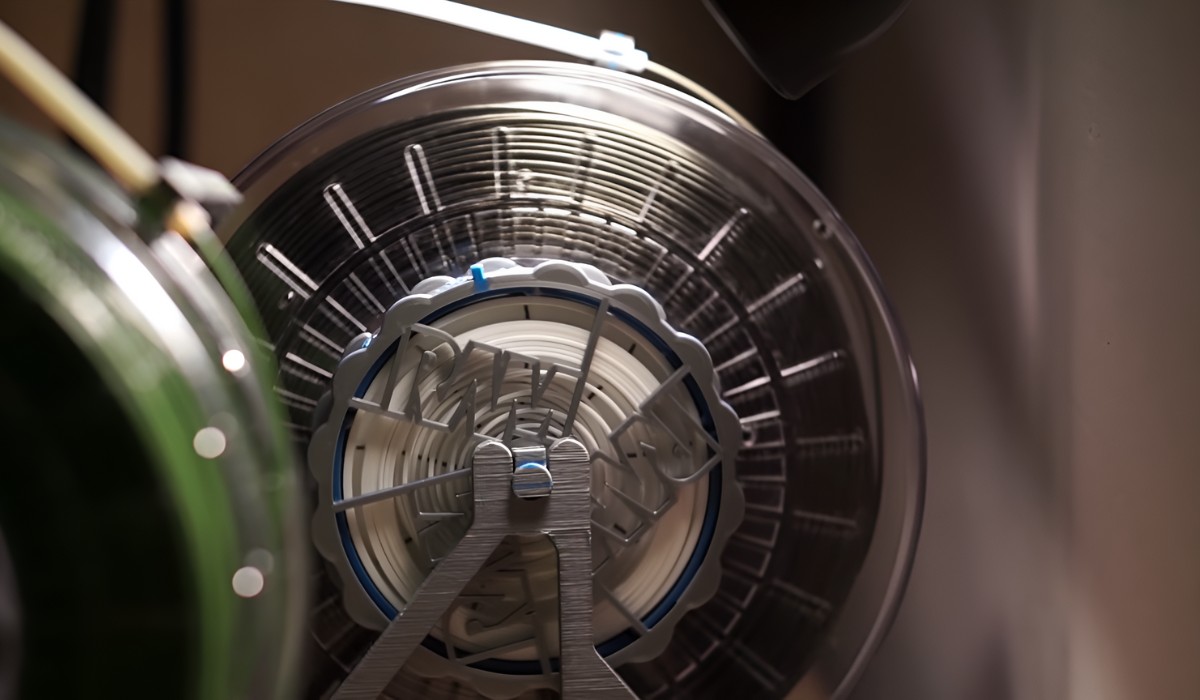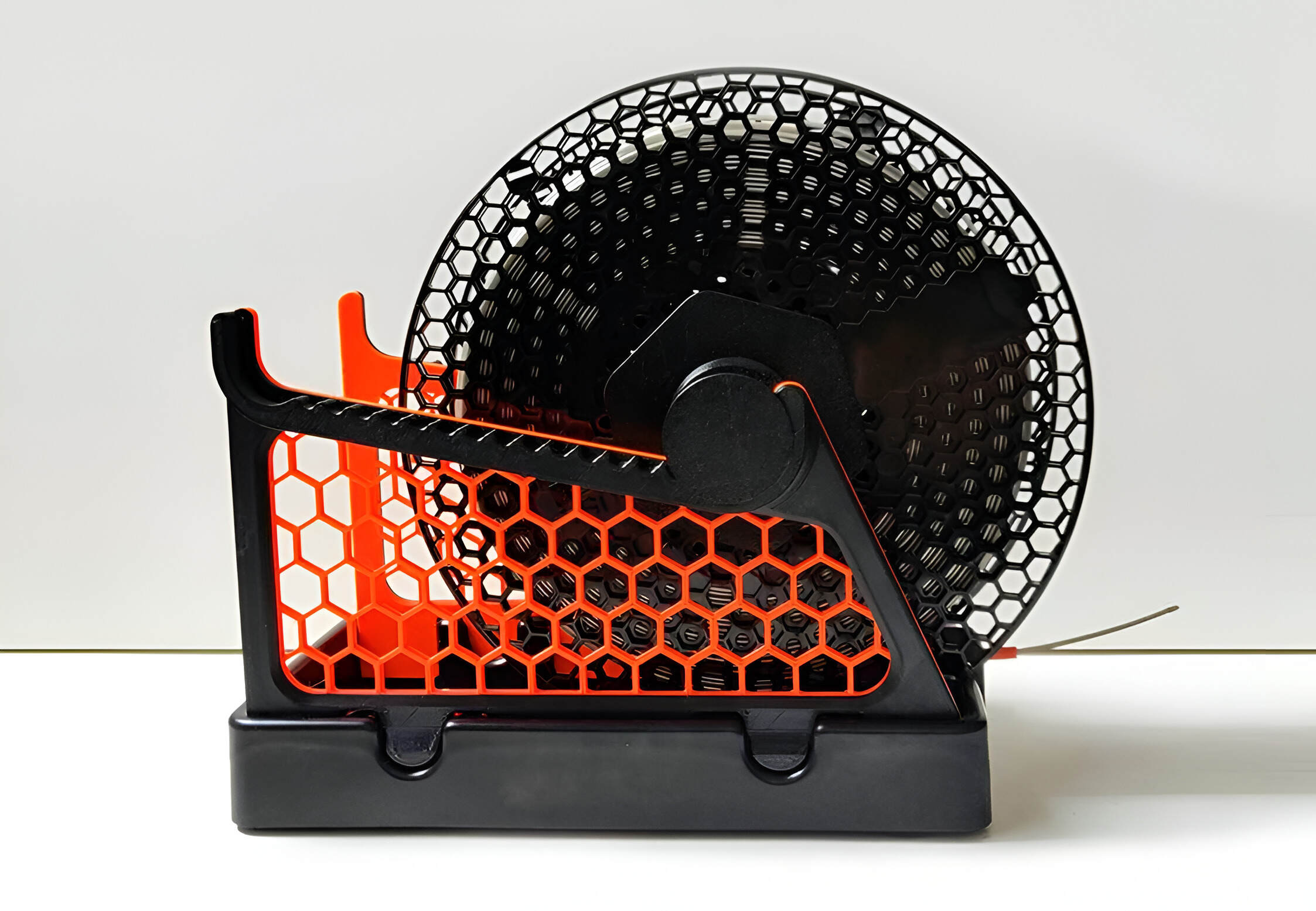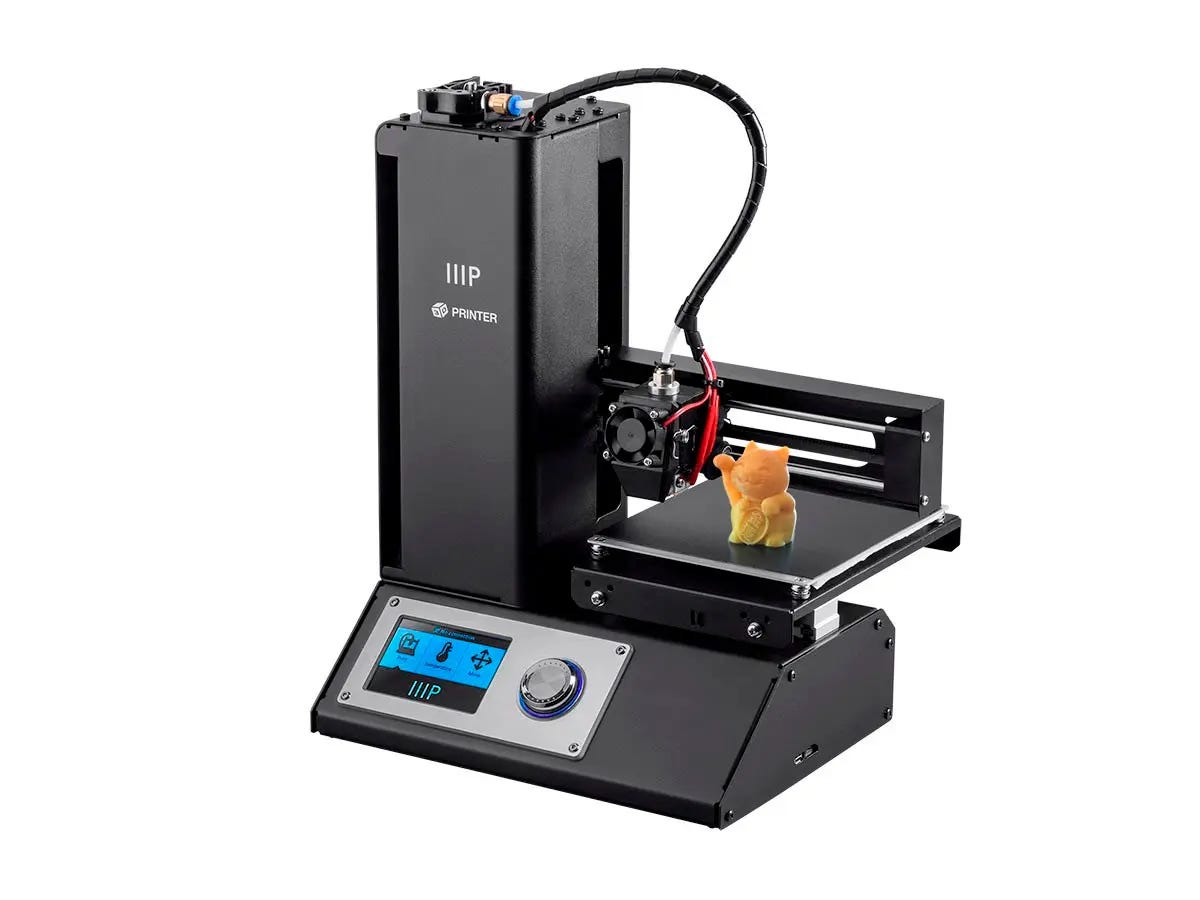Introduction
3D printing technology has revolutionized various industries, allowing for the creation of complex and intricate structures with unmatched precision. One of the key components in 3D printing is the plastic material used for printing. But how strong is 3D printing plastic? Understanding the strength properties of these plastics is crucial for determining their suitability in different applications.
3D printing plastic refers to the filament or resin used as the raw material in the 3D printing process. These plastics come in a variety of types, each with its own set of characteristics and strengths. The strength of 3D printing plastic is a vital consideration, especially when designing functional prototypes or end-use parts.
In this article, we will explore the strength properties of 3D printing plastic and delve into the factors that influence its strength. Additionally, we will examine the testing methods used to measure the strength of these materials and compare the strength of different types of 3D printing plastics.
It is important to note that the strength of 3D printing plastic can vary significantly depending on the specific type of plastic used, the printing parameters, and post-processing techniques. By understanding the strength limitations and capabilities of these materials, designers and engineers can make informed decisions in choosing the most suitable option for their applications.
Throughout this article, we will discuss the various types of 3D printing plastic and their respective strength properties. We will explore the different factors that affect the strength of 3D printing plastic, such as layer adhesion, infill density, and print orientation. Additionally, we will cover the testing methods employed to measure the strength properties of these materials, including tensile testing and impact testing.
Furthermore, we will compare the strength of different types of 3D printing plastic, such as PLA (Polylactic Acid), ABS (Acrylonitrile Butadiene Styrene), PETG (Polyethylene Terephthalate Glycol), and Nylon. By examining their inherent strength and other key characteristics, we can gain insights into their suitability for specific applications.
While the strength of 3D printing plastic is a critical aspect to consider, it is also essential to understand the limitations that these materials present. We will explore the applications and constraints of 3D printing plastic strength, such as its impact on load-bearing capacity, temperature resistance, and structural integrity.
By the end of this article, you will have a comprehensive understanding of how strong 3D printing plastic can be and the key factors involved in determining its strength. This knowledge will enable you to make informed decisions when choosing the most suitable 3D printing plastic for your specific requirements.
What is 3D Printing Plastic?
3D printing plastic, also known as filament or resin, is the material used as the raw input in the 3D printing process. It is specifically designed for additive manufacturing, where objects are built layer by layer to form a three-dimensional structure.
The 3D printing plastic used in the process can be either in the form of filament or resin. Filament is a thin and long strand of plastic, typically wound on a spool, and it is commonly used in FDM (Fused Deposition Modeling) 3D printers. Resin, on the other hand, is a liquid material that solidifies when exposed to certain wavelengths of light. It is primarily used in SLA (Stereolithography) and DLP (Digital Light Processing) 3D printers.
There are various types of 3D printing plastic available, each with its own unique characteristics and properties. Some of the commonly used plastics in 3D printing include:
- PLA (Polylactic Acid): PLA is one of the most popular types of 3D printing plastic due to its biodegradable nature and ease of use. It has a relatively low melting temperature and provides excellent print quality with minimal warping.
- ABS (Acrylonitrile Butadiene Styrene): ABS is a durable and impact-resistant plastic commonly used in industrial applications. It has a higher melting point compared to PLA and is known for its strength, toughness, and ability to withstand higher temperatures.
- PETG (Polyethylene Terephthalate Glycol): PETG is a versatile and strong 3D printing plastic that combines the best qualities of PLA and ABS. It offers excellent layer adhesion, reduced warping, and increased impact resistance.
- Nylon: Nylon is a highly versatile and durable 3D printing plastic known for its high strength, flexibility, and chemical resistance. It is commonly used in applications that require parts with high mechanical stress or wear.
These are just a few examples of the many available types of 3D printing plastic. Each type has its own advantages and limitations, making it suitable for specific applications. The choice of 3D printing plastic depends on factors such as desired strength, flexibility, temperature resistance, and the specific requirements of the printed object.
3D printing plastic has revolutionized the manufacturing industry by allowing for the rapid and cost-effective production of complex and customized parts. Its versatility, availability in various types, and the ability to create intricate designs with high precision make it a preferred choice for many industries, including aerospace, automotive, healthcare, and consumer goods.
Understanding the properties and strengths of different types of 3D printing plastic is essential for selecting the most suitable material for a specific application. In the following sections, we will delve deeper into the strength properties of 3D printing plastic and explore the factors that influence its strength.
Types of 3D Printing Plastic
There are a variety of 3D printing plastics available, each with its own unique properties and characteristics. The choice of plastic depends on the specific requirements of the printed object, such as strength, flexibility, temperature resistance, and desired surface finish. Here are some of the most commonly used types of 3D printing plastic:
- Polylactic Acid (PLA): PLA is one of the most widely used 3D printing plastics due to its ease of use and biodegradability. It is derived from renewable resources such as cornstarch or sugarcane, making it an eco-friendly option. PLA has a low melting point and exhibits good layer adhesion. It is known for its ease of printing, minimal warping, and vibrant color options.
- Acrylonitrile Butadiene Styrene (ABS): ABS is a common and versatile 3D printing plastic known for its durability and impact resistance. It has a higher melting point compared to PLA and exhibits strong inter-layer adhesion. ABS can withstand higher temperatures and provides good mechanical strength. However, it can be prone to warping and requires a heated build plate for optimal printing results. It is commonly used in applications that require robust parts, such as functional prototypes and automotive components.
- Polyethylene Terephthalate Glycol (PETG): PETG is a popular choice for 3D printing due to its excellent strength and ease of use. It combines the best properties of PLA and ABS, offering good layer adhesion, reduced warping, and increased impact resistance. PETG has a higher melting temperature than PLA and exhibits good chemical resistance. It is commonly used for functional parts, mechanical components, and containers.
- Nylon: Nylon is a strong and versatile 3D printing plastic with excellent mechanical properties. It offers high tensile strength, flexibility, and chemical resistance. Nylon is commonly used in applications that require parts with high impact resistance, such as gears, bearings, and structural components. It can be more challenging to print compared to PLA or ABS, requiring a heated build plate and proper printing settings to prevent warping.
- Polycarbonate (PC): Polycarbonate is a strong and impact-resistant 3D printing plastic known for its high temperature resistance. It can withstand temperatures up to 150°C (302°F) without deformation, making it suitable for applications that require parts exposed to high heat or load-bearing capabilities. However, polycarbonate can be challenging to print due to its high melting temperature and tendency to warp. It requires a heated build plate and an enclosed print chamber to achieve optimal results.
These are just a few examples of the many types of 3D printing plastics available. Each plastic offers unique properties and advantages, making it suitable for specific applications. It is essential to consider the desired characteristics and requirements of the printed object when selecting the appropriate 3D printing plastic.
It is worth noting that within each type of plastic, there can also be variations in properties and formulations. For example, there are different variants of PLA and ABS with modified properties, such as increased heat resistance or enhanced flexibility.
Understanding the strengths and limitations of different types of 3D printing plastics is crucial for achieving successful prints and meeting the desired performance requirements. In the next section, we will explore the strength properties of 3D printing plastic in more detail.
Strength Properties of 3D Printing Plastic
The strength properties of 3D printing plastic play a crucial role in determining its suitability for different applications. Understanding the strength characteristics of these materials helps in choosing the right type of plastic for a specific use case. Here are some key factors related to the strength properties of 3D printing plastic:
Tensile Strength: Tensile strength refers to the maximum stress a material can withstand before breaking under tension. It is an essential property to consider when evaluating the strength of 3D printing plastic. Different types of plastic have varying tensile strengths, with some exhibiting higher values than others. For example, nylon has a higher tensile strength compared to PLA or ABS, making it suitable for applications that require high load-bearing capabilities.
Flexural Strength: Flexural strength, also known as bend strength, measures a material’s resistance to bending or deformation under load. It is particularly important for components that will experience bending or flexing forces during use. 3D printing plastics with a higher flexural strength can withstand greater bending forces without permanent deformation. PLA and nylon are known to exhibit good flexural strength, making them suitable for parts that require flexibility and durability.
Impact Resistance: Impact resistance is the ability of a material to withstand sudden high-energy impacts and prevent fracture or cracking. This property is critical in applications where the printed objects will be subjected to impacts or shocks. ABS is recognized for its excellent impact resistance, making it a popular choice for functional prototypes and parts that require resilience.
Layer Adhesion: Layer adhesion refers to the bond strength between successive layers of a 3D printed object. Strong layer adhesion is essential for ensuring the structural integrity and overall strength of the printed part. PLA and ABS generally have good layer adhesion, which contributes to their strength. However, factors such as print settings, temperature, and cooling can influence layer adhesion, and proper optimization is required to achieve the desired strength.
Surface Finish: While surface finish does not directly measure the strength of 3D printing plastic, it influences the appearance and aesthetics of the final printed object. Smoother surface finishes are generally considered more visually appealing, but they may come at the cost of reduced strength. For functional prototypes or parts that require high mechanical strength, sacrificing surface finish may be necessary to ensure optimal strength properties.
Post-Processing Techniques: In addition to the inherent strength properties of 3D printing plastics, post-processing techniques can also significantly impact their strength. Methods such as annealing, heat treatment, or chemical smoothing can improve the strength and durability of 3D printed parts. These techniques can enhance layer adhesion, reduce internal stresses, and improve overall mechanical properties.
It is important to note that the strength properties of 3D printing plastic can vary depending on various factors such as printing parameters, infill density, print orientation, and post-processing techniques. Optimizing these variables can help achieve the desired level of strength and performance for specific applications.
In the next section, we will delve into the factors that can affect the strength of 3D printing plastic and explore the testing methods used to measure its strength.
Factors Affecting the Strength of 3D Printing Plastic
Several factors can influence the strength of 3D printing plastic, ranging from material properties to printing parameters and post-processing techniques. Understanding these factors is crucial for optimizing the strength of printed objects and achieving the desired mechanical properties. Here are some key factors that can affect the strength of 3D printing plastic:
Printing Parameters: The printing parameters used, such as layer height, print speed, and nozzle temperature, can significantly impact the strength of the printed part. Adjusting these parameters can affect the layer adhesion, overall density, and material flow, all of which play a role in determining the final strength. Finding the optimal printing parameters for a specific type of plastic is essential in achieving optimal strength.
Infill Density: Infill density refers to the amount of material that fills the interior of a 3D printed object. Higher infill densities generally result in stronger parts, as there is more material providing internal support. However, increasing infill density also leads to longer print times and increased material usage. Finding the right balance between infill density and print time is crucial in achieving the desired strength while considering other factors such as weight and cost.
Print Orientation: The orientation of the 3D printed object can have a significant effect on its strength. Layer bonding may vary depending on the orientation of the printed layers relative to the applied load. Horizontal/flat layers tend to have stronger inter-layer adhesion compared to vertical layers. It is important to consider the intended use and the forces the object will experience to determine the optimal print orientation for maximum strength.
Material Properties: The inherent properties of the 3D printing plastic itself, such as tensile strength, flexural strength, and impact resistance, greatly influence the overall strength of the printed part. Different types of plastic have varying strengths, and selecting the appropriate material based on the specific requirements of the application is essential. Additionally, factors such as the melting temperature and thermal stability of the plastic can affect the printing process and the resulting strength properties.
Post-Processing Techniques: Post-processing techniques can be employed to enhance the strength of 3D printed parts. Heat treatment methods like annealing or controlled cooling can improve the crystallinity and bonding between layers, thereby increasing the overall strength. Chemical smoothing techniques can also improve the inter-layer adhesion and surface finish, resulting in enhanced strength properties.
Design Considerations: The design of the printed object itself can impact its strength. Factors such as wall thickness, fillet radius, and the presence of internal ribs can influence the overall strength and structural integrity. Designing objects with appropriate wall thickness and reinforcement can help distribute stresses more efficiently, leading to improved strength.
It is important to note that these factors are interconnected and should be considered holistically when optimizing the strength of 3D printed objects. Adjusting printing parameters, selecting the right material, and implementing post-processing techniques should be done in synergy to achieve the desired mechanical properties for a specific application.
In the next section, we will explore the testing methods utilized to measure the strength of 3D printing plastic, providing valuable insights into the integrity and performance of these materials.
Testing Methods for 3D Printing Plastic Strength
Measuring the strength of 3D printing plastic is crucial for evaluating its suitability for different applications. Various testing methods are employed to assess the mechanical properties and performance of these materials. Here are some commonly used testing methods for determining the strength of 3D printing plastic:
Tensile Testing: Tensile testing is a widely used method for evaluating the tensile strength and elongation properties of materials. It involves subjecting a test specimen to an axial load in a controlled manner until it breaks. The load and corresponding deformation data are recorded, allowing for the calculation of tensile strength, Young’s modulus, and other mechanical properties. Tensile testing can provide insights into the overall strength and ductility of 3D printing plastic.
Flexural Testing: Flexural testing, also known as bend testing, is performed to assess the flexural strength and modulus of 3D printing plastic. It involves applying a bending force to a beam-shaped test specimen until it fractures or reaches a specified deflection. Flexural testing provides information about the material’s resistance to bending and deformation under load, which is particularly useful for evaluating the strength of parts subjected to bending stresses.
Impact Testing: Impact testing measures the resistance of 3D printing plastic to sudden high-energy shocks or impacts. It is commonly performed using the Charpy or Izod impact test methods, which involve striking a notched test specimen with a pendulum. The energy absorbed during the fracture is measured, allowing for the evaluation of the material’s toughness and impact resistance. Impact testing is crucial for assessing the strength and durability of 3D printed parts in applications prone to sudden impacts or dynamic loads.
Compression Testing: Compression testing is conducted to evaluate the compressive strength and modulus of 3D printing plastic. It involves applying a compressive force to a test specimen until it fails or reaches a specified deformation. Compression testing provides valuable data on how well the material can withstand compressive loads, which is essential for applications where the printed object may be subjected to crushing or compressive forces.
Shear Testing: Shear testing measures the shear strength and resistance of a material to sliding forces. It involves applying a shear load to a test specimen in a parallel or orthogonal direction to the bonding layers. Shear testing helps assess the material’s ability to withstand shear stresses, which is particularly important for applications where parts may experience sliding or shearing forces.
Layer Bonding Evaluation: Evaluating the quality of the layer bonding in 3D printing plastic can provide insights into its overall strength. This can be done by visually inspecting the printed part for any signs of delamination, weak bonding, or visible layer lines. Additionally, microstructural analysis using techniques like microscopy or scanning electron microscopy (SEM) can be employed to examine the layer adhesion and bonding interface more closely.
These testing methods provide valuable data on the strength properties and performance of 3D printing plastic. By assessing factors like tensile strength, flexural strength, impact resistance, and layer bonding quality, designers and engineers can gain insights into the strength limitations and capabilities of these materials.
It is important to note that the specific testing method chosen depends on the type of material, the desired mechanical properties, and the intended application of the 3D printed part. Combining multiple testing methods allows for a comprehensive assessment of the strength characteristics, helping to ensure the suitability and reliability of 3D printing plastic for specific use cases.
In the next section, we will compare the strength properties of different types of 3D printing plastics, providing insights into their relative strengths and weaknesses.
Comparing Strength of Different 3D Printing Plastics
When it comes to selecting the right 3D printing plastic for a specific application, understanding the strength characteristics of different materials is essential. Here, we will compare the strength properties of several commonly used 3D printing plastics, providing insights into their relative strengths and weaknesses:
Polylactic Acid (PLA): PLA is known for its ease of use, biodegradability, and good printability. In terms of strength, PLA exhibits moderate tensile strength and flexural strength. However, compared to other materials, it can be more brittle and prone to cracking under high load or impact. PLA is best suited for applications where high strength is not a primary requirement, such as rapid prototyping, artistic models, or educational projects.
Acrylonitrile Butadiene Styrene (ABS): ABS is a popular choice for functional prototypes and end-use parts due to its durability and impact resistance. It offers better tensile strength and flexural strength compared to PLA. ABS also provides good layer adhesion, making it suitable for parts that require high strength and structural integrity. However, ABS is more prone to warping and requires a heated build plate and enclosed build chamber for optimal print results.
Polyethylene Terephthalate Glycol (PETG): PETG combines the best qualities of both PLA and ABS, offering good strength properties and ease of use. It has higher tensile strength and flexural strength compared to PLA and exhibits excellent layer adhesion. PETG is more impact-resistant than PLA and less prone to warping than ABS. It is a versatile 3D printing plastic suitable for a wide range of applications, including functional parts, mechanical components, and containers.
Nylon: Nylon is renowned for its exceptional strength, flexibility, and impact resistance. It offers high tensile strength, flexural strength, and excellent layer adhesion. Nylon is particularly well-suited for applications requiring parts with high mechanical stress or wear, such as gears, bearings, and functional prototypes. However, printing with nylon can be more challenging, requiring specialized settings, a heated build plate, and proper ventilation due to its higher printing temperature and tendency to absorb moisture.
Polycarbonate (PC): Polycarbonate is known for its exceptional strength, high-temperature resistance, and excellent impact resistance. It exhibits higher tensile strength and flexural strength compared to many other 3D printing plastics. Polycarbonate is suitable for applications where parts are exposed to high heat or require high load-bearing capabilities. However, polycarbonate has a high melting temperature and can be challenging to print, necessitating a heated build plate and an enclosed build chamber for optimal results.
It is worth noting that the strength properties of 3D printing plastics can vary depending on the specific brand, quality, and formulation of the material. Additionally, different manufacturers may offer variations of each type of plastic with modified properties to suit specific requirements.
When choosing a 3D printing plastic, it is important to consider not only the strength properties but also other factors such as flexibility, temperature resistance, and surface finish. Each type of plastic has its own advantages and limitations, and the selection should be based on the specific needs of the application.
Comparing the strength properties of different 3D printing plastics allows for an informed decision when choosing the most suitable material for a specific project. However, it is important to conduct proper testing and experimentation to validate the strength and performance of the chosen material for a specific application.
In the next section, we will explore the applications and limitations of 3D printing plastic strength, providing insights into their practical use and considerations.
Applications and Limitations of 3D Printing Plastic Strength
The strength of 3D printing plastic plays a significant role in determining its applications and limitations. Understanding the practical use and considerations of the strength properties is crucial when choosing the most suitable material for a specific project. Here, we will explore the applications and limitations of 3D printing plastic strength:
Applications:
– Rapid Prototyping: The strength of 3D printing plastic allows for the creation of functional prototypes for design validation and testing purposes. Depending on the required strength, different plastics like ABS and PETG can be used to produce prototypes that closely mimic the properties of the final product.
– End-Use Parts: 3D printing plastic’s strength enables the manufacturing of end-use parts, especially in industries like automotive, aerospace, and medical. Components such as brackets, casings, and fixtures can be produced using strong materials like nylon or polycarbonate, satisfying the mechanical requirements of the application.
– Customized Equipment and Tools: 3D printing plastic strength allows for the creation of customized equipment and tools in various industries. These can include jigs, fixtures, molds, and even functional components for machinery or robotics.
– Art and Design: The strength of 3D printing plastic enables artists and designers to explore creative possibilities and push the boundaries of their artwork. The ability to print intricate and durable structures using materials like PLA or PETG allows for the creation of sculptures, architectural models, and artistic installations.
Limitations:
– Temperature Resistance: While certain 3D printing plastics like polycarbonate offer excellent temperature resistance, most plastics have limitations in terms of heat resistance. High temperatures can cause deformation, softening, or even melting of the printed parts. It is essential to consider the required temperature resistance when selecting the appropriate material for applications exposed to elevated temperatures.
– Load-Bearing Capacity: Although many 3D printing plastics demonstrate good strength properties, they may have limitations in terms of their load-bearing capacity. Understanding the maximum loads the printed part will experience is crucial to ensure it can withstand the required forces without deformation or failure. In applications requiring high load-bearing capabilities, materials like nylon or polycarbonate may be more suitable.
– Environmental Exposure: Certain 3D printing plastics may experience degradation or reduced strength when exposed to environmental factors such as UV radiation, moisture, or chemicals. It is important to consider the specific environmental conditions that the printed parts will be subjected to and select a material with appropriate resistance properties.
– Surface Finish Sacrifice: Achieving a high-quality surface finish may sometimes require sacrificing some strength, especially when using support structures or optimizing printing settings. Depending on the application, it is important to find the right balance between strength and surface finish, considering the visual appearance versus performance requirements of the printed part.
Understanding the applications and limitations of 3D printing plastic strength is crucial when selecting the appropriate material for a given project. It is essential to evaluate the specific requirements, environmental conditions, and performance needs to make an informed decision on the most suitable material.
In the next section, we will provide a summary and key takeaways from this article, offering a comprehensive understanding of 3D printing plastic strength and its importance in various applications.
Conclusion
In conclusion, understanding the strength properties of 3D printing plastic is crucial for selecting the most suitable material for specific applications. Different types of 3D printing plastic, such as PLA, ABS, PETG, Nylon, and Polycarbonate, offer varying levels of strength, flexibility, and durability. Evaluating the mechanical properties of these materials helps in determining their suitability for different use cases.
Factors such as tensile strength, flexural strength, impact resistance, and layer adhesion play a significant role in the overall strength of 3D printing plastic. It is important to consider these factors along with other considerations like temperature resistance, load-bearing capacity, and surface finish requirements.
Testing methods such as tensile testing, flexural testing, impact testing, compression testing, shear testing, and layer bonding evaluation can provide valuable insights into the strength properties of 3D printing plastic. Additionally, optimizing printing parameters, infill density, print orientation, and employing post-processing techniques can further enhance the strength of printed parts.
Applications of 3D printing plastic strength range from rapid prototyping to end-use parts, customized equipment and tools, and art and design. However, there are limitations regarding temperature resistance, load-bearing capacity, exposure to environmental factors, and surface finish considerations that need to be taken into account.
By considering the specific requirements, environmental conditions, and performance needs of a project, designers and engineers can make informed decisions when selecting the right 3D printing plastic for their applications.
In conclusion, the strength of 3D printing plastic is a crucial factor that determines the functionality and reliability of the printed objects. By understanding the strength properties of different types of 3D printing plastic and considering the various factors that influence their strength, practitioners can harness the full potential of 3D printing technology and create robust and durable parts for a wide range of applications.







